Banff
I love telling people I come from Banff. They get all excited and nod until I add that I come from the original Banff, the Banff in the Northeast of Scotland, not that ‘Johnny come lately’ in Canada. The Banff in Canada was named after my Banff, by Scots who immigrated, and has gone on to slightly upstage its Scottish cousin. My Banff Springs, whilst a great place for a slap up dinner, is much newer and slightly smaller than it’s Canadien counterpart, and the hills around Banff, well let us just say, they are not mountains.
Like many, I left Banff after I finished school. Could not wait to leave and explore the world, at seventeen feeling I had outgrown my hometown. First to college and work in Aberdeen, the nearest big ‘toon’ then, following my husband and his job, to London, America and finally Copenhagen. But more and more I feel Banff and Scotland is Home, and it is calling to me. The slightly more grown up me can now see a different Banff. Let me tell you a little about my hometown.
History of Banff and Macduff
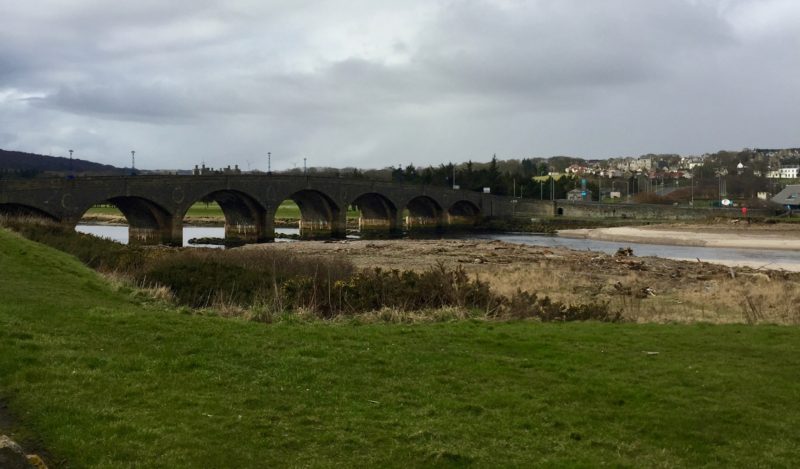
When I say Banff, I mean the town and its neighbour Macduff, where my parents now live.
Growing up I felt that Banff was the centre of the universe. It was only later, that I realised a population of three and a half thousand, although big by the standard of neighbouring villages, meant that Banff was somewhere on the outer edges of the Milky Way.
Banff and Macduff face each other across the mouth of the River Deveron.
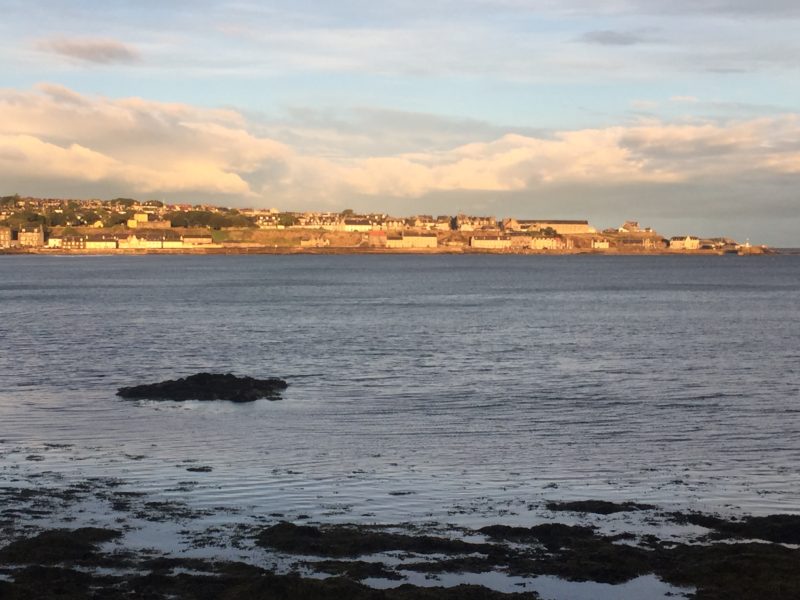
Banff has existed as far back as 1167, but Robert the Bruce proclaimed it a Royal Burgh in 1372. At that time Macduff was granted the right to be a Thanage or small village . Banff was the county town of Banffshire, more of a merchant trading town and Macduff, known up until 1783 as ‘Doune’, was a fishing village.
Funnily enough, like Copenhagen, my home for now, the original reason for the success of both towns was the plentiful herring fishing. Whilst the harbour in Macduff is still a commercial harbour,
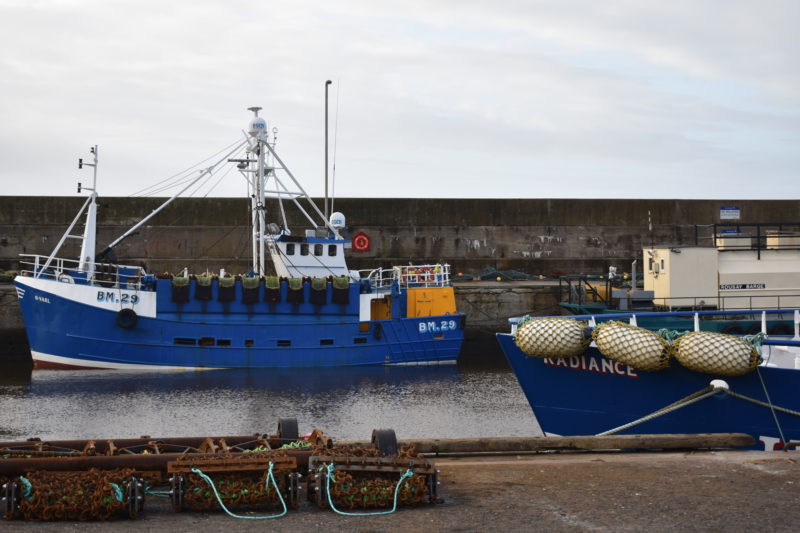
the one in Banff is now strictly recreational. (And on one visit home I may even remember to take a photo!)
Macpherson’s Rant
There is a wee story that tells of a rift between the two towns. It concerns Jamie Macpherson, a sort of Robin Hood type figure, without the giving to the poor part, who was the son of a local laird and a gypsy. Macpherson had been caught many times for theft and the general crime of being an Egyptian or gypsy, both punishable by death, but each time had been rescued by powerful relatives. However, his luck finally ran out and he was captured in Banff and sentenced to hang.
Whilst in prison, Macpherson wrote his lament or rant, which he played just before his death. He asked if someone would take his fiddle and play it at his wake, but when no-one came forward, he broke it over his knee with the remark “No one else shall play Jamie Macpherson’s fiddle”
There is a reference to the Broken Fiddle in one of the shops in town which is opposite the old gaol where Macpherson spent his last days.
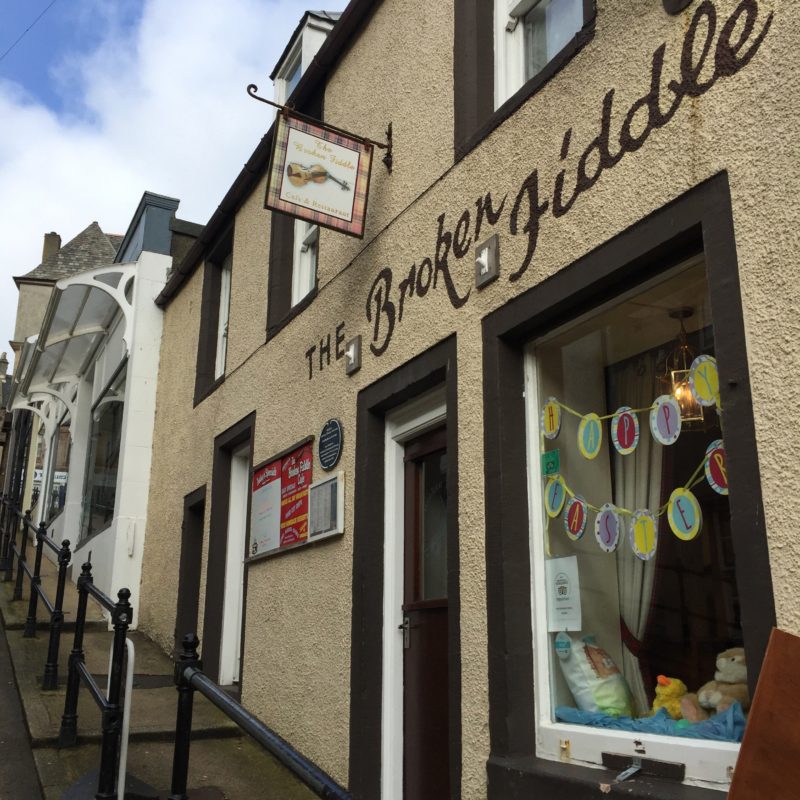
The rant
We know today was rewritten by Robert Burns and sung by The Corries,
Here are some of the best verses
- Farewell, yon dungeons dark and strong,
- The wretch’s destinie!
- Macpherson’s time will not be long
- On yonder gallows-tree.
- Chorus
-
- Sae rantingly, sae wantonly,
- Sae dauntingly gaed he;
- He play’d a tune, and danc’d it roon’
- Below the Gallow tree.
- O what is Death but parting breath?
- On many a bloody plain
- I’ve dar’d his face, and in this place
- I’ll scorn him yet again.
- Chorus
- Forgive the man whose rage betray’d
- Macpherson’s worthless life;
- When I am gone, be it not said,
- My legacy was strife.
- Chorus
- Untie these bands frae aff o’ my hands
- And gie tae me my sword
- There’s no a man in a’ Scotland
- But I’ll brave him at his word
- Chorus
- There’s some come here tae see me hang
- And some tae buy my fiddle
- But afore that I dae part wi’ her
- I’d brak’ her through the middle
- Chorus
- He took his fiddle into both of his hands
- And he brak’ it o’er a stone
- Said, Nae ither hands shall play on thee
- When I am deid and gane
- Chorus
- Now farewell light, thou sunshine bright, “
- And all beneath the sky!
- May coward shame distain his name,
- The wretch that dares not die!
- Chorus
- A reprieve was coming o’er the brig o’ Banff
- Tae set Macpherson free,
- But they pit the clock a quarter afore
- And they hanged him from a tree.
A Reprieve
Now, the plot thickens. A reprieve for Macpherson was apparently on its way to Banff and a horse was spotted crossing the Banff bridge. Aiming to be rid of the gypsy, legend has it that the magistrates in Banff turned the clock forward by fifteen minutes so that Macpherson would be already hanged before the reprieve arrived. The deception caused a great argument between the towns, as Macpherson had many friends in Macduff. To this day, the church tower in Macduff has a clock on only three sides and the side facing Banff is blank.
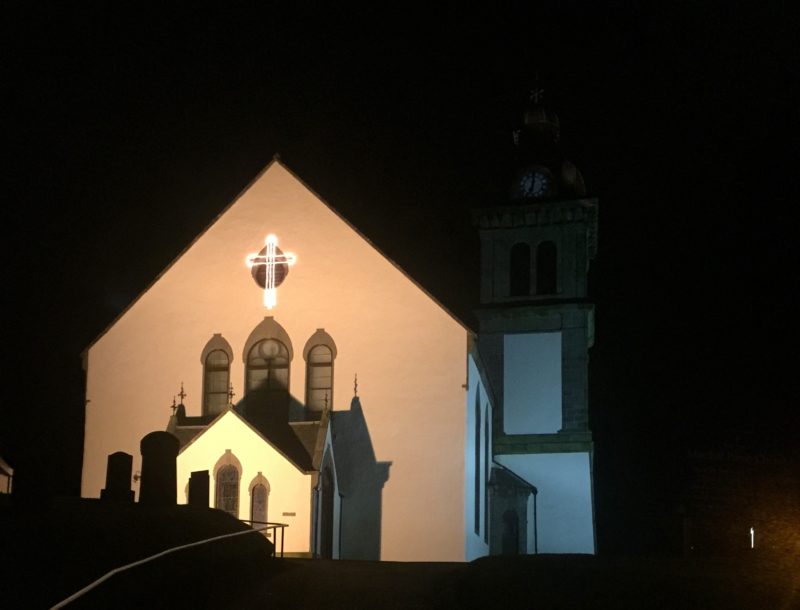
Banff and Macduff Today
Banffshire no longer exists, both Banff and Macduff are part of Aberdeenshire, so Banff no longer has the status or the administrative workload of a county town. The trades of boatbuilding and repair however have prospered in Macduff, whilst in other coastal towns they have declined. Macduff is now the last remaining yard in the U.K. to build wooden fishing boats over 56 feet and steel fishing boat are regularly launched from the harbour.
Large supermarket chains have, like in other towns across the UK, led to many small shops closing. However, the local communities are thriving and there is a strong sense of belonging. You can still find specialist shops selling local produce and crafts, the ice cream shops are second to none and there is always an excellent tea-shop within walking distance.
If you visit, try to eat at least one of your meals from a local fish and chips shop. For a real treat, choose my favourite, a white pudding supper (oatmeal, lard and salt, deep-fried). When visiting I always try to eat haggis, Scotland’s famous local delicacy, and black or white pudding at least once every day. I also fill my suitcase with as much as I can carry, throwing in a few sausages for good measure, before returning to Copenhagen.
Tourism is bringing commerce back to the area. The area was popular in pre package holiday days and many Glaswegians used to come with their caravan toBanff Links during their two-week holidays, known as the ‘Glasgow Fair’. Now, with people looking for something a little different from their vacation, Banff and the surrounding area are becoming popular again.
Language
Doric is spoken in the North-East of Scotland, basically English, but with many local words substituted. I still find the word ‘potatoes’ slightly pretentious, as I, a young quine, grew up eating ‘tatties’. I even remember a German lesson where the entire class lost a point as everyone translated Mittagessen as ‘dinner’ (pronounced daenner) No-one in Banff had ever heard the word ‘lunch’!
Bakeries and the School Playground
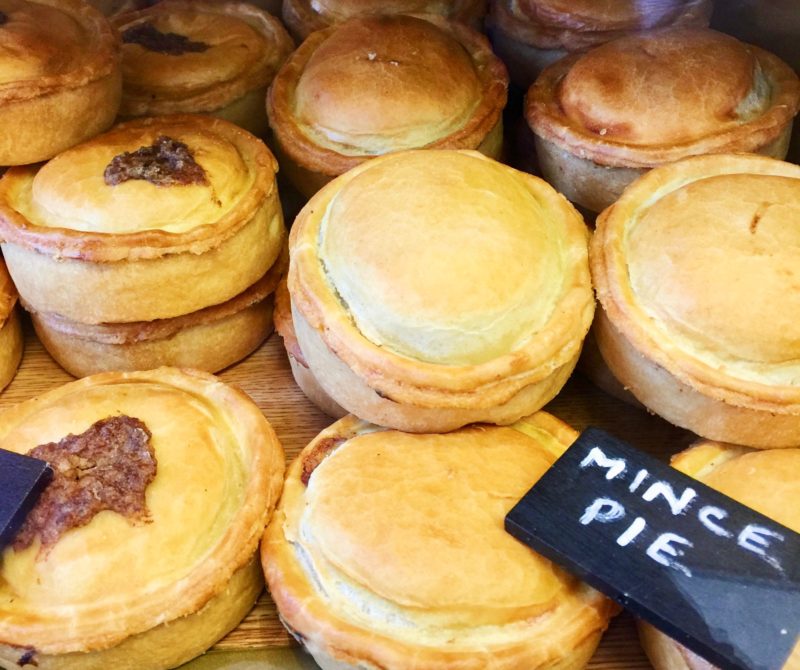
One of the things I love about going back to Banff is the selection of baked goods found in the local bakeries. Scotland loves its’ savoury treats and ‘fancy pieces’, or cakes and biscuits. My goto in Banff is ‘Chalmers the Bakers’ which I have just discovered is really called ‘The Seafield Bakery‘.
I love pies, but my favourite type is the one topped by mashed tatties.
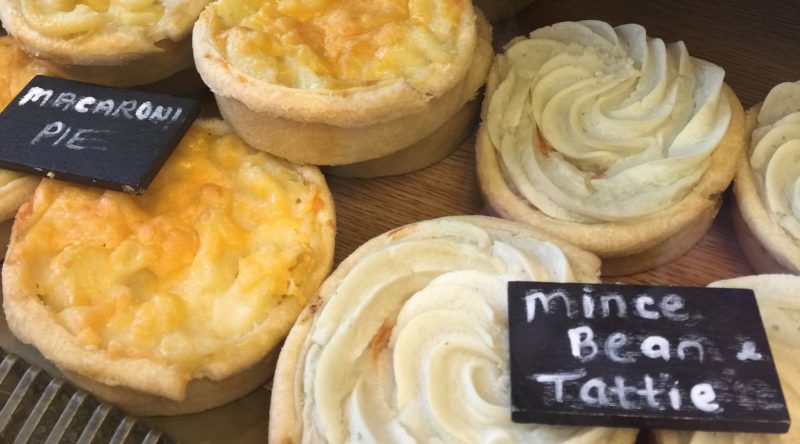
When we were at Banff Academy, high school, the bakers could bring their vans into the playground at ‘playtime’ (recess for my American friends). At eleven o’clock, it was one of life’s great joys to have a hot pie or sausage roll for your ‘playpiece’ or snack. Of course, if you were ‘skint’, you could always buy a dumpling, a square of all the left overs from the baked goods mixed together then covered with pink icing.
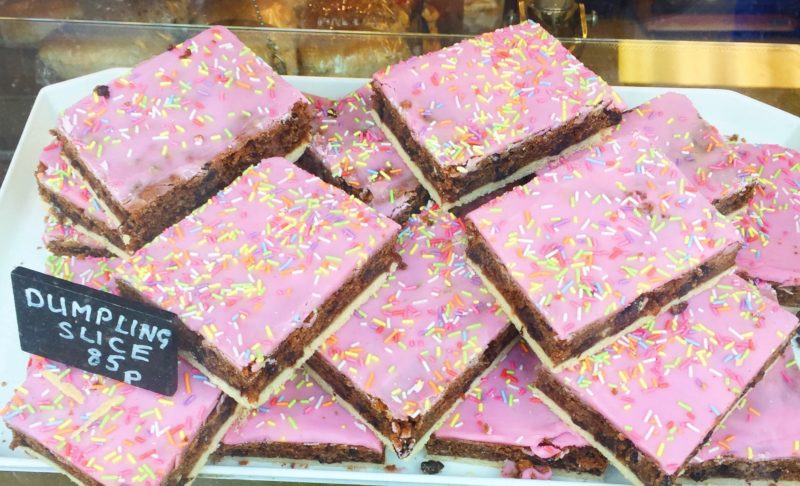
I used to pay 2p back in the 70’s.
If we are talking about all the heart stoppingly good things you can buy in a Scottish bakery, let us not forget a buttery, or ‘rowie’. Butteries are the Scottish equivalent of a croissant, but less healthy. Think more butter, a bit of lard and more salt. So good! If you want to find out more I found a great article about butteries in the Guardian, keep reading, Banff gets a mention.
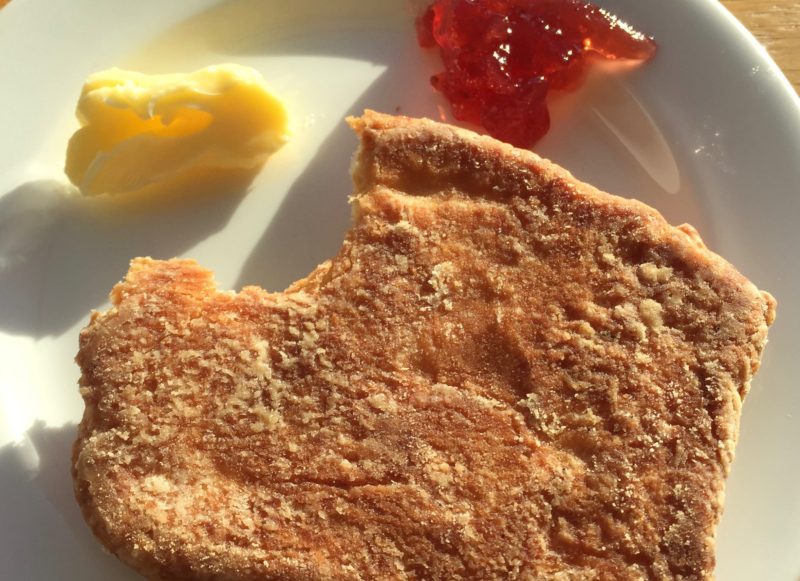
If you time it right you can sometimes buy the butteries just as they are coming out of the oven, which might be in the wee small hours. Just the thing for a wee treat after night out.
Duff House
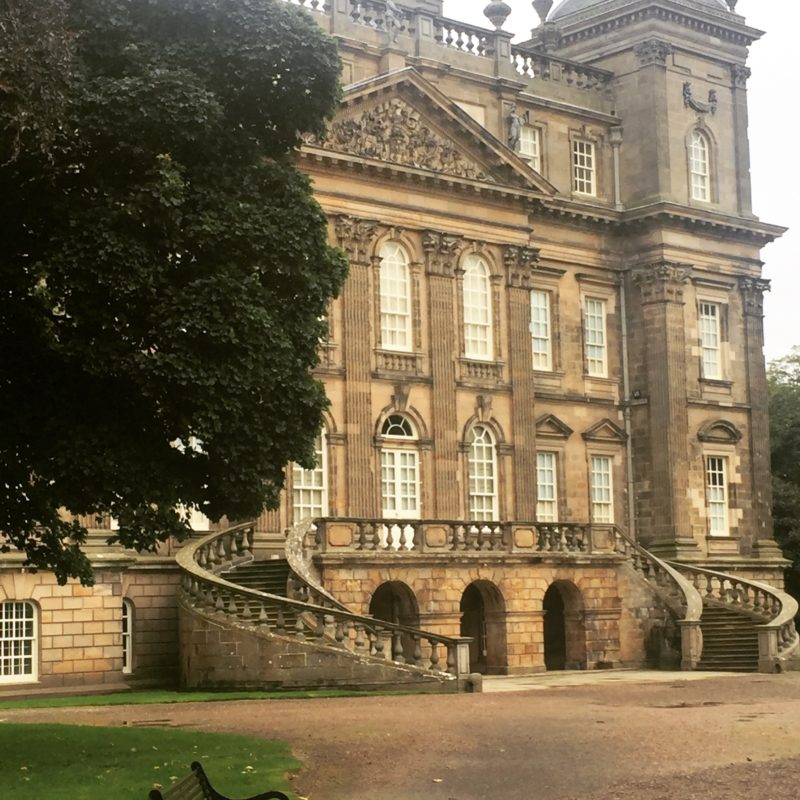
Duff House is the local ‘big’ house, and lies on the outskirts of town. It was built in 1735 by William Adams for William Duff of Braco, the first Earl of Fife. Adams was the foremost architect of his time, however he fell out with the Earl over building costs. As a result, William Duff never moved into Duff House. In fact the house annoyed the Earl so much, he used to pull the blinds down on his carriage as he passed. by. Duff House is now regarded as one of Britain’s finest examples of Georgian architecture.
In time, the house became the family seat of the Earls of Fife, but it was donated to the Burgh of Banff in 1906. A bit of a white elephant, it has been a palm court hotel, a sanatorium, a prisoner of war camp and a barracks. When I was young the house was closed, although you could occasionally persuade the caretaker to let you in to have a wee look around. The grounds were always accessible and I have many happy memories of riding my bike there with my dog, Dandy, and going on family picnics.
Duff House and grounds are now open to the public and in the care of Historic Scotland. The house contains many fine works of Scottish art. Part of the grounds are now given over to Duff House Royal, Banff’s rather lovely golf course.
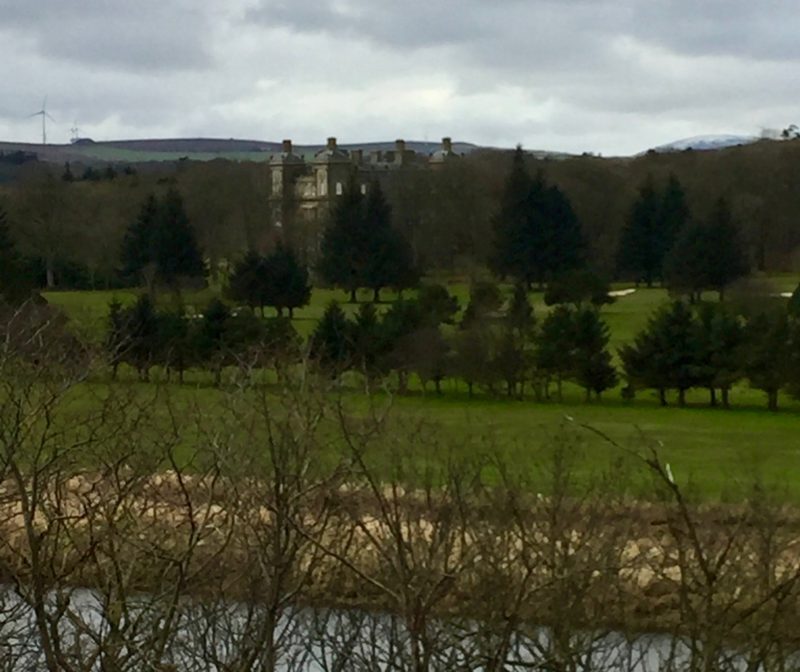
There is a great wee tearoom at the house and a good hike out to the Bridge of Alvah, past the Ice House and Mausoleum. For opening times click here
Banff Castle
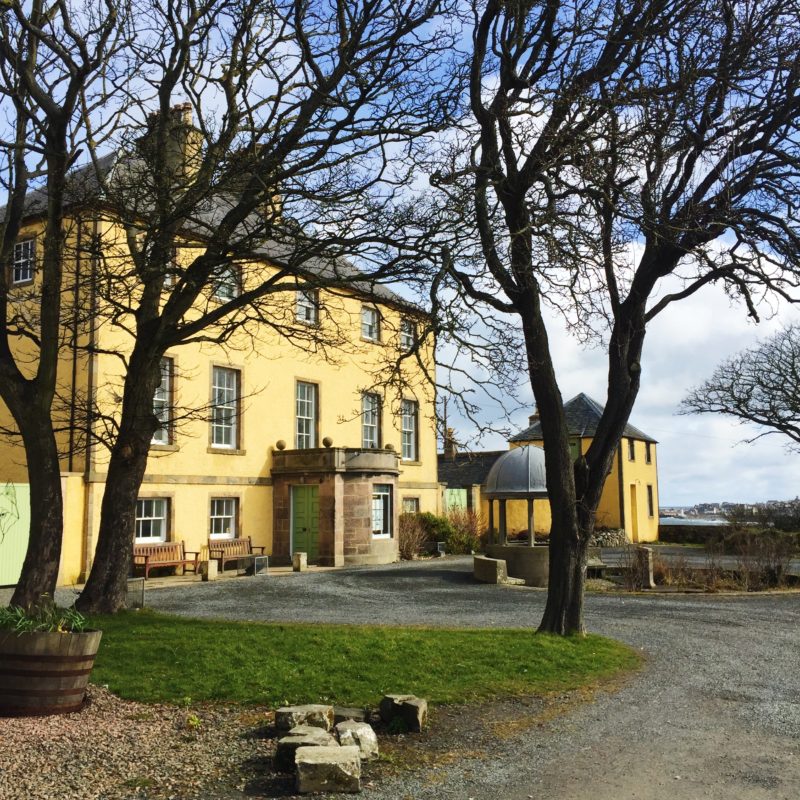
There has been a castle overlooking Banff since the 12th century, when Vikings were the most likely unwelcome visitor. The present house was built by John Adams, son of William Adams.
My fondest memories were of the Banff Flower Show, which took place every summer in the grounds of the castle. It was the usual fair for all to come and display their cakes, vegetables and crafts. For many years my favourite event was the miniature garden. My granny and I used to go all out to make a tiny version of a real garden. The best bit, however, was the tea they served in the castle itself. The Northeast excels in ‘home-bakes’ and there were plates heaped with scones, cakes and tray-bakes, think Chocolate Caramel Squares, on an ”all you could eat” basis. Heaven!
Now there is a grass labyrinth in the grounds, which promises to supply all life’s answers
and a permanent teashop called the Kelpie if you are in need of substinance.
Coastal Walking Routes
The great joy now of my visits home are walking and running in Banff and Macduff and the surrounding areas. Teresa, in addition to being a fabulous baker and seamstress now runs half marathons. She graciously keeps me, her slowpoke sister-in-law, company on shorter runs when I am back home. I particularly love the walk between Banff and Macduff, up over the Hill of Doune. At any time of the year it is a lovely way to walk home from my bothers house in Banff. The beaches are great too, although the water is a wee bit chilly. We swam, or ‘dooked’ in it as children, more of a quick dip really then a run home for a bath to warm up.
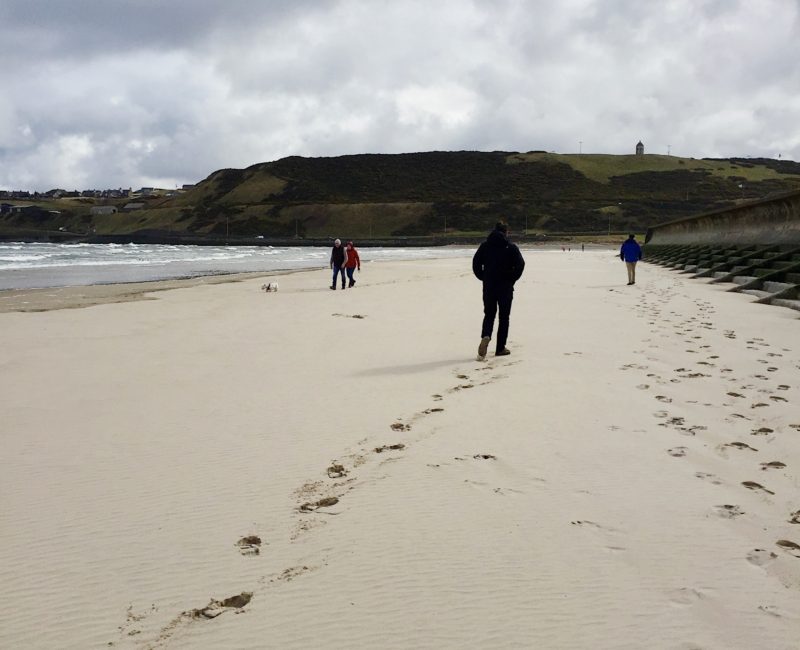
Macduff boasts an award-winning aquarium. Further afield, there are some hills to climb.
Nearby, the old smugglers village of Pennan was used as the location for the movie Local Hero, and its famous phonebox is a listed historical monument. Being Scotland, there are obviously castles to visit (all with tea rooms) and whiskies to taste. The lighthouse museum in Fraserburgh is worth a visit and Peterhead has recently opened its old prison to the public.
Pot of Gold
One of the books I often quote is “The Alchemist” by Paulo Coelho. There are all sorts of spiritual truths in this bestselling book, but the one I resonate with is that the hero dreams about a pot of gold, which leads him on a long quest The book ends up with the hero discovering that the gold has always been hiding at home, where his journey stated.
I am very lucky, I still have family in the area so I get to go ”home’ on a regular basis, no matter where I live.
For all that I have gained on my journey perhaps the biggest gain is coming to really appreciate, like the hero in “the Alchemist’ all that my home town has to offer.
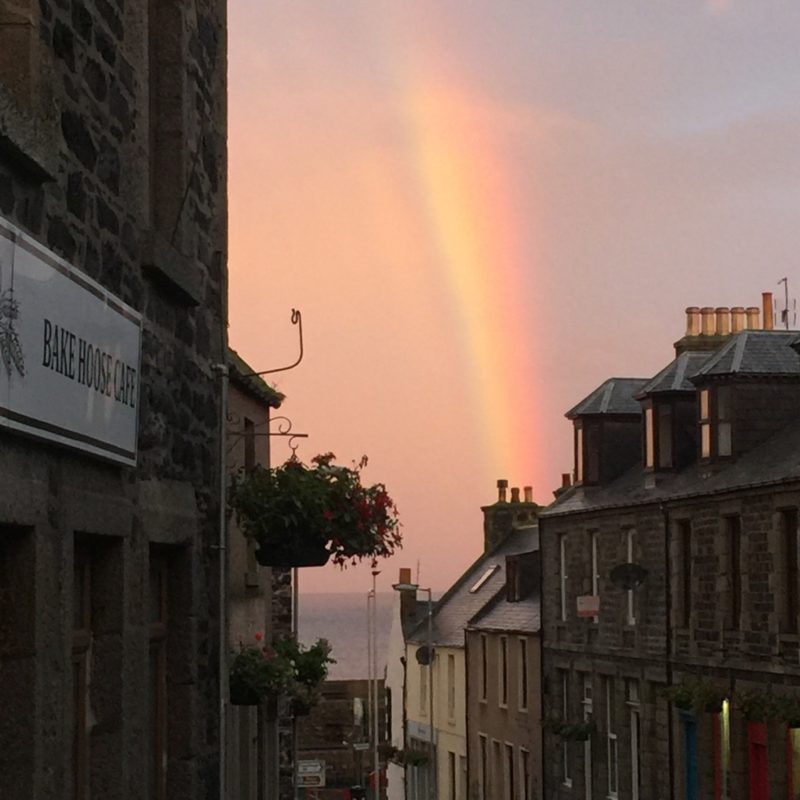
If you are thinking of visiting may I recommend
My brother has just bought a wee flat, overlooking the water, which he is renting out. Teresa, my very clever sister-in-law has decorated the apartment beautifully and bakes cakes for the guests. It sleeps four very comfortably. The best bit though is the incredible views over the water. Obviously I have vested interest, but no financial reward in recommending their lovely holiday flat
The link to the website is here.
Postscript – Going Home
I went to University in Aberdeen the local big ‘toon’. We are talking almost forty years ago. One of my friends at University was a girl from the Isle of Lewis called Kareen. After University, Kareen returned to Lewis and, apart from going to her wedding, I have not seen her since. Like many from the islands, she returned home and never left again.
The band Runrig came from the Isle of Skye and was regarded as our local Scottish band. Runrig are most famous for their version of ‘Loch Lomond’, which has become a national anthem in Scotland, sung at football matches, weddings and other key Scottish events.
When they were less famous, Runrig often played at Aberdeen University. Kareen and I, along with our mates, always tried to go and see them as they brought the islands to mainland Scotland. My main memory of their concerts is turning to see Kareen watching them with tears streaming down her face.
Recently in Copenhagen I had the pleasure of attending Runrig’s farewell tour. After forty-five years they were calling it a day. I went not really expecting to recognise anything more than Loch Lomand, they sang a lot of songs in gaelic. Then they started playing a song, and suddenly I was young girl back in the Student halls. It was the song that had always made Kareen cry, and listening properly to the lyrics for the first time I understood why. And yes, I cried when they played.


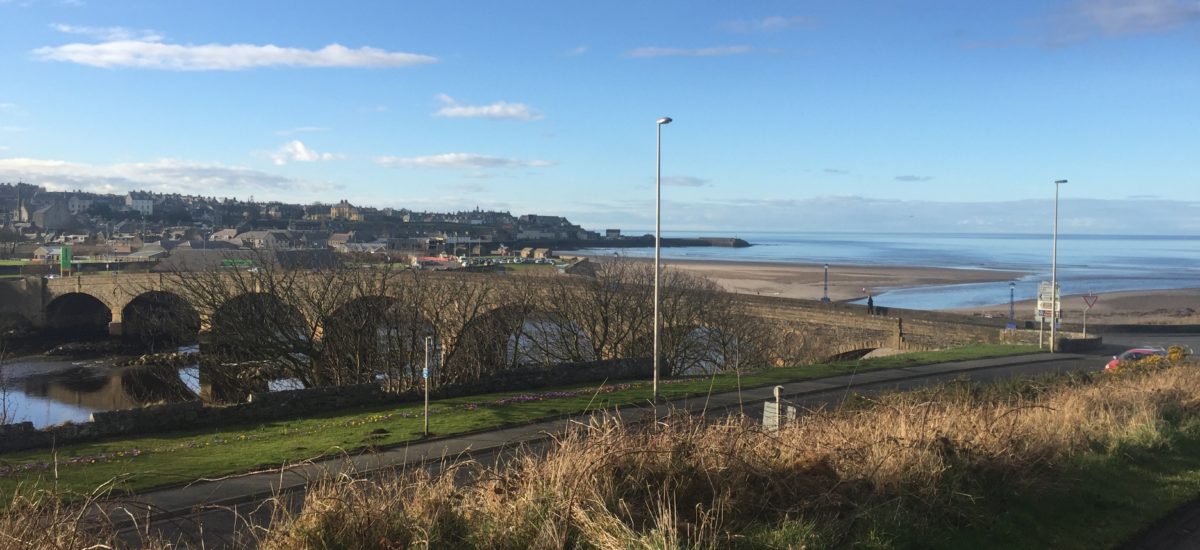
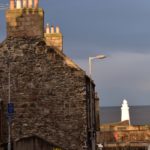
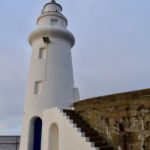

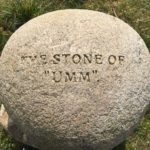
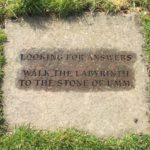
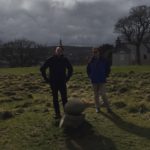
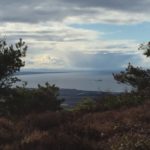
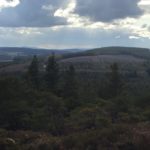
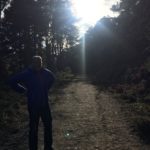

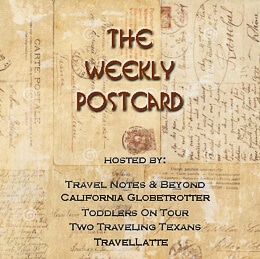

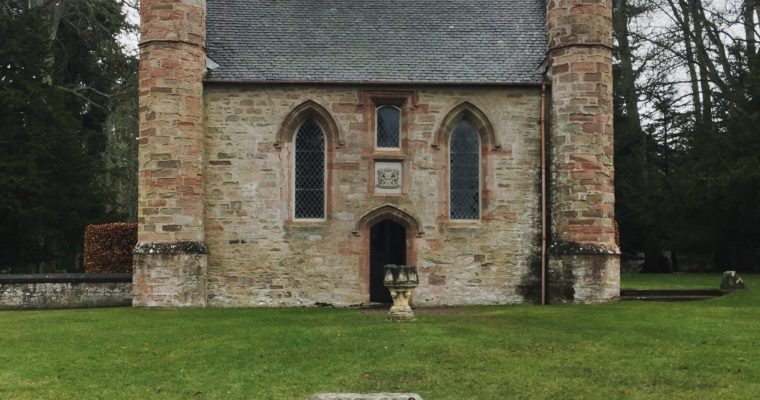
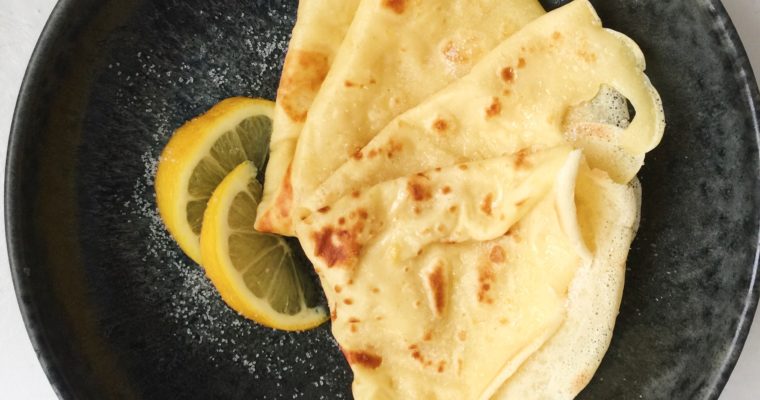
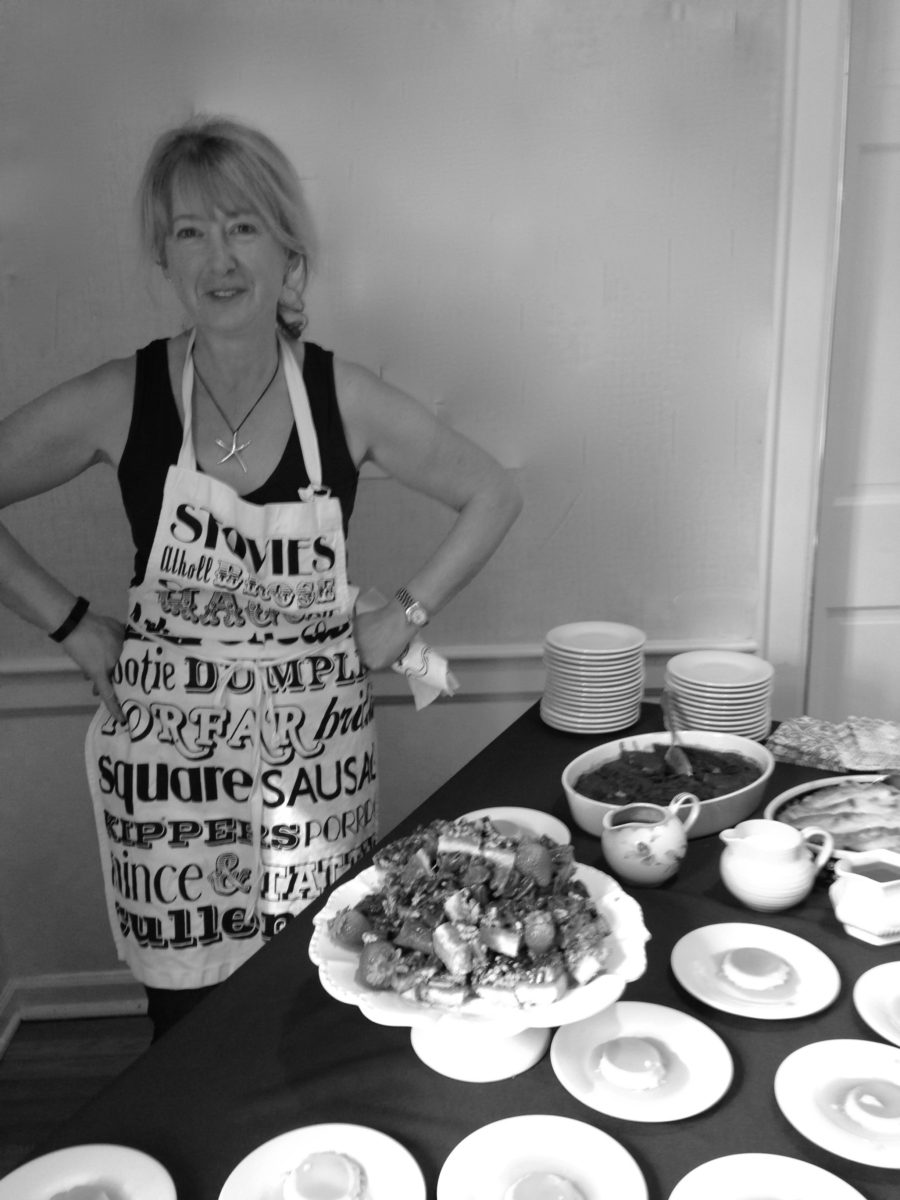 That's me in the corner
That's me in the corner



